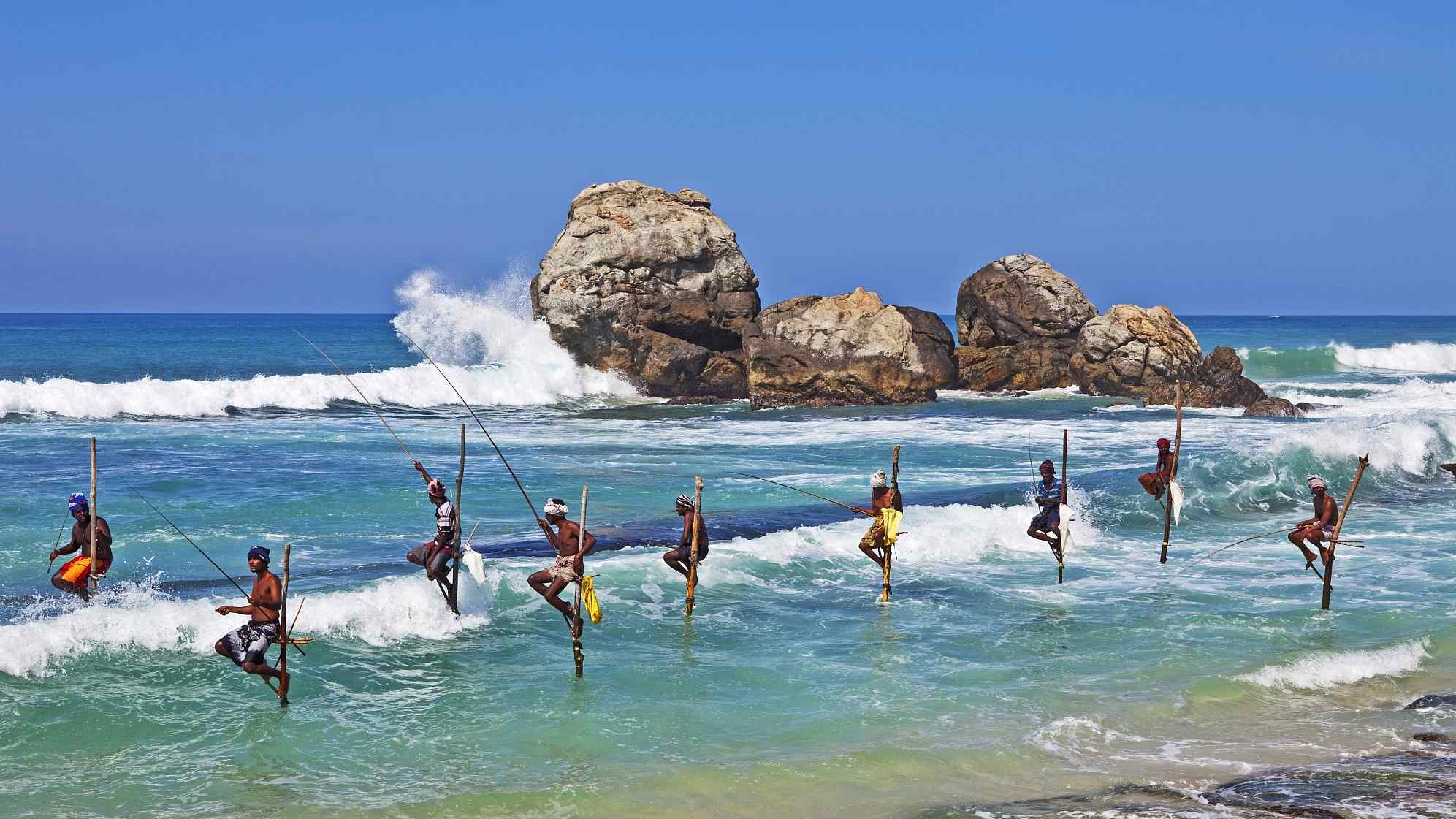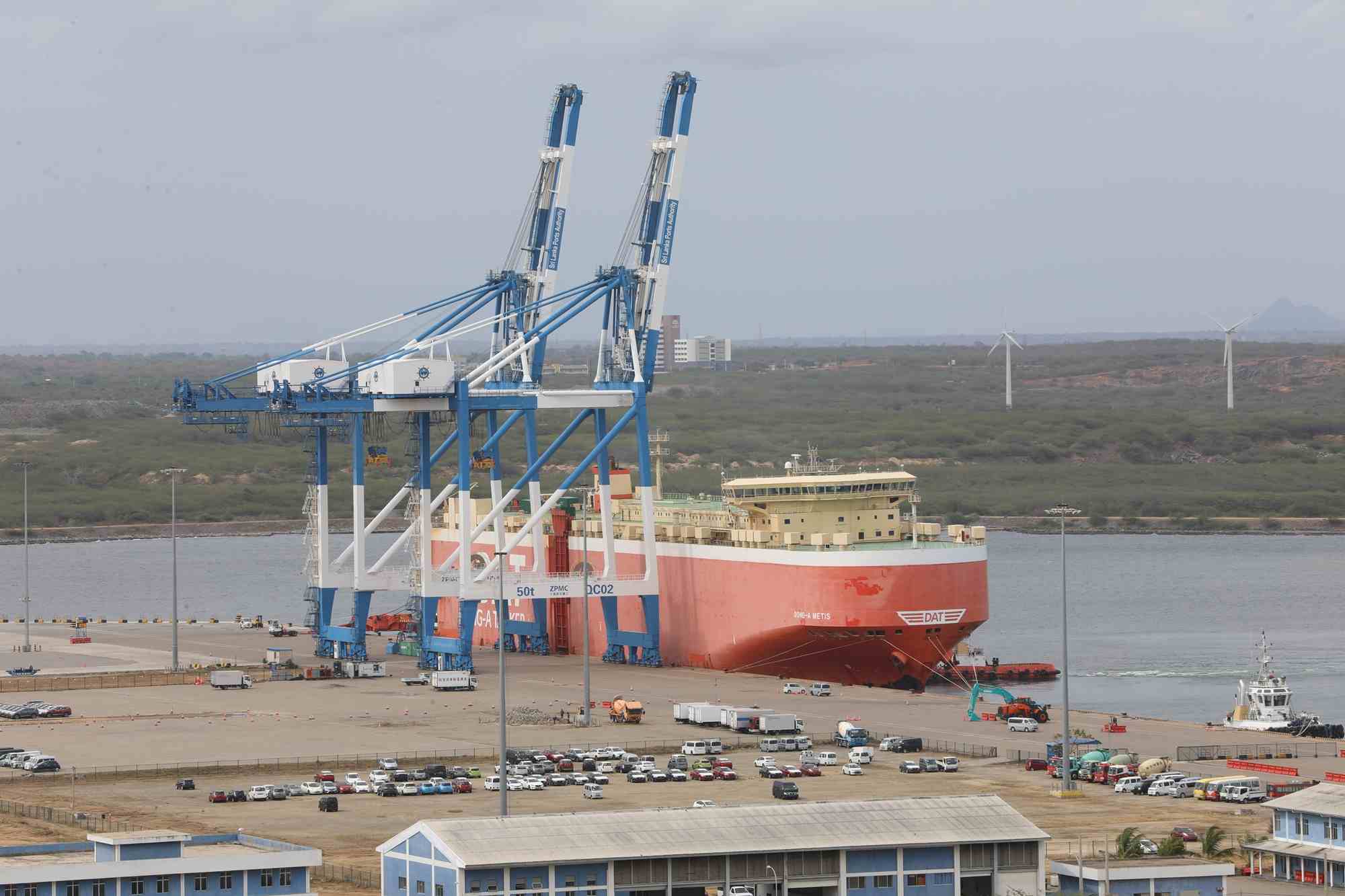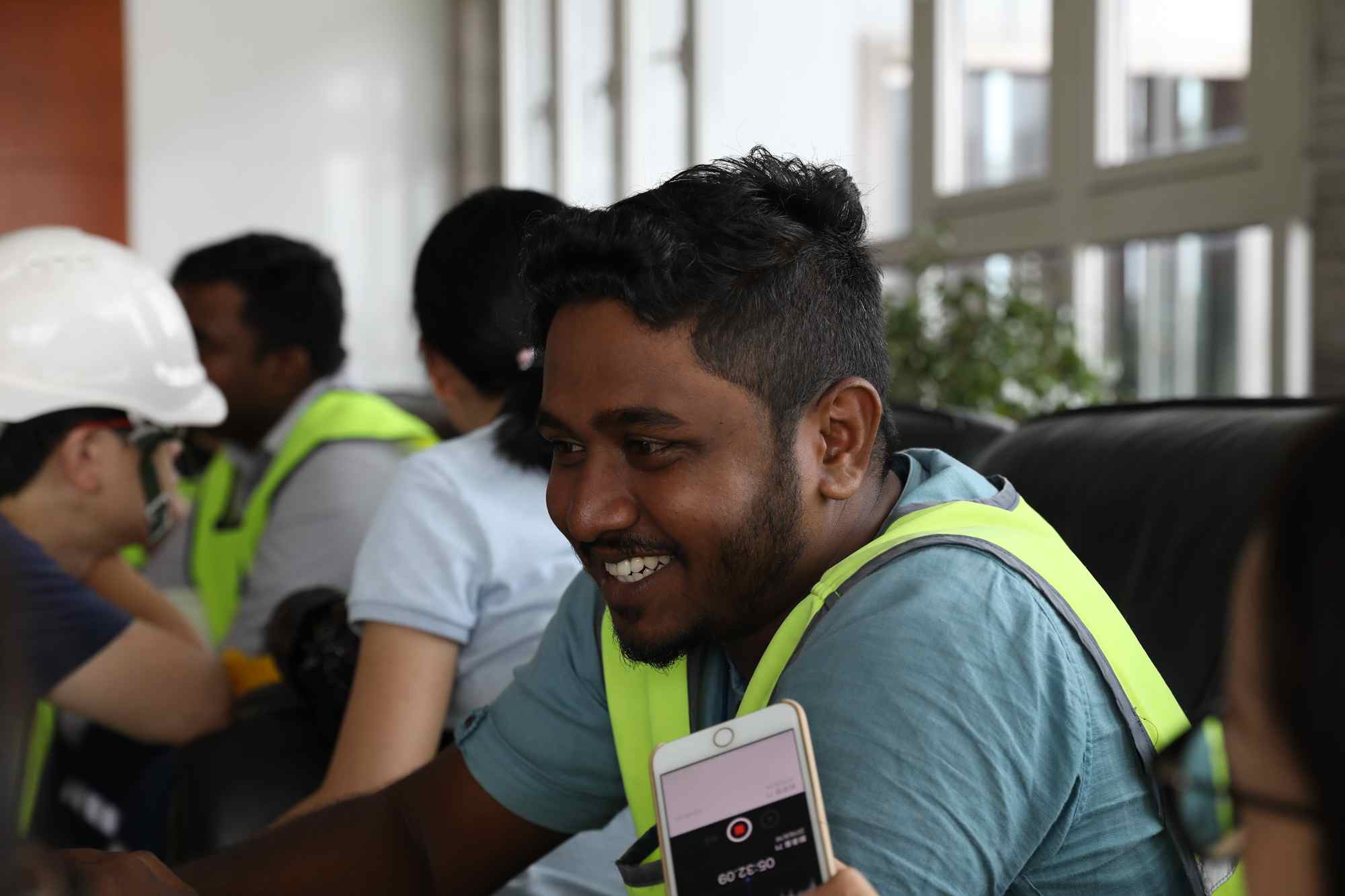
Travel
12:29, 21-Aug-2018
Journeying the Belt and Road – Episode 3: Sri Lanka
Updated
12:04, 24-Aug-2018
By Yin Zhongwang
00:58

From a young age, I knew the children's book story of a Ceylon prince who arrived in China with Chinese maritime explorer Zheng He’s ships. Given a warm reception, he made a decision to remain, lived the rest of his life in China and was even buried in the port city of Quanzhou, in the eastern Fujian Province. The story with cordial feeling has added to tea and gems, making me more than thrilled to join a media tour and embark on a four-day trip to Sri Lanka. By amazing karma, the object of the journey is to film the ports on the island country known as the Pearl of the Indian Ocean.
The Port of Hambantota
We walked out of the Colombo Airport after an eight-hour flight from Beijing, and then we braved a long-distance bus from the capital city to the southern town of Hambantota. The bus rode along the southwest coast, and I got my first glimpse of the tropical country, palm-fringed beaches, luscious green paddies and leisurely wondering animals.

A street view in Sri Lanka. /CGTN Photo
A street view in Sri Lanka. /CGTN Photo
Five hours later, we arrived at the Port of Hambantota, which was previously in the media spotlight after an influential American newspaper had published an article raising doubts over the role China plays in construction and operation of the port. Hambantota is still one of the most underdeveloped regions of the island country but thanks to its prime location to the main shipping lane it provides connectivity and thus has potentials in advancing industrial park development.

Ship unloading cargo at the Hambantota Port, Sri Lanka. /CGTN Photo
Ship unloading cargo at the Hambantota Port, Sri Lanka. /CGTN Photo
To get the first-hand information, we talked to Chinese and Sri Lankan staff of HIPG, the port’s operator, and were also allowed to film the ro-ro cargo operation at the terminal, finding out Japanese and Korean carmakers have begun transhipping drastically increasing numbers of vehicles through the Port of Hambantota.

Cargo of vehicles at the Hambantota Port, Sri Lanka. /CGTN Photo
Cargo of vehicles at the Hambantota Port, Sri Lanka. /CGTN Photo
When asked about the controversial newspaper article, Mr. Tissa Wickramasinghe, the chief operation officer of HIPG, said he was not going to make comments on media speculation, but a response had already been given by local media reports that big changes had already been brought forth with the port.

Local employee overlooks the Hambantota Port, Sri Lanka. /CGTN Photo
Local employee overlooks the Hambantota Port, Sri Lanka. /CGTN Photo
The Port of Colombo
After a 2-day interview in Hambantota, we returned to Colombo to film the second port in our tour. The Port of Colombo is the largest and busiest port in Sri Lanka and is the 23rd biggest port in the world. Colombo International Container Terminal (CICT), a joint venture between China Merchants Group and the Sri Lanka Ports Authority (SLPA), constructed Colombo’s third container terminal with a 2.4 million TEUs (Twenty-foot equivalent unit) capacity.

Container terminal of the Colombo Port. /CGTN Photo
Container terminal of the Colombo Port. /CGTN Photo
I interviewed several local employees of CICT, and they were all satisfied with their Chinese managers who said to respect Sri Lankan culture such as tea breaks in the daytime.

The local employee answer questions during interviews. /CGTN Photo
The local employee answer questions during interviews. /CGTN Photo
When asked about some western media calling the port projects in Sri Lanka as a debt trap, Dr. Parakrama Dissanayake, the chairman of SLPA, responded that debt trap may not be a right term, because, at this point of time, the question of a debt trap does not apply anymore to this public, private partnership.
(Video by Luo Caiwen)

SITEMAP
Copyright © 2018 CGTN. Beijing ICP prepared NO.16065310-3
Copyright © 2018 CGTN. Beijing ICP prepared NO.16065310-3